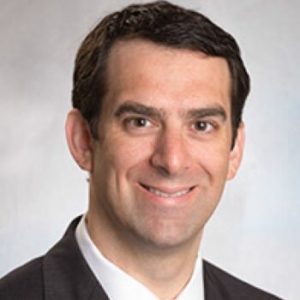We are approaching the end of the decade in which online medical education exploded in popularity. In the 2010s, free open-access medical education (#FOAMed) grew out of a small but vocal group of primarily American and Australian emergency and critical care physicians and other health care providers. Today, #FOAMed and #MedTwitter comprise a global movement that looks to be permanent. While other medical specialties have certainly gotten in on the act, emergency medicine continues to be at the forefront. The reasons for this are twofold: We were early on this wave so our participation levels are superb, and with our vast clinical practice, there is always something to be learned or improved upon. Twitter has proven to be an invaluable tool in disseminating new research knowledge as well as slick packaging of older information that has not yet been fully translated into practice.
Explore This Issue
ACEP Now: Vol 38 – No 03 – March 2019As both a participant and an observer, I have been gratified to see other fields of medicine flock toward emergency medicine education and research leaders online, interacting with us in ways that, in the past, perhaps, would not have happened in the traditional hallways of medicine. In essence, our field’s leadership in social media has helped put emergency medicine at the center of progressive medicine and, specifically, medical education. The more we welcome non–emergency physicians into our online conversations, the better this dialogue will become. Here are a few nonemergency Twitter accounts to watch.
Jen Gunter, MD (@DrJenGunter), is an obstetrician-gynecologist who has been blogging her expertise for years. Her blog and her hold-no-punches Twitter feed are inspirational to me. A classic “happy warrior,” Dr. Gunter vocally and proudly takes on the cynical pseudoscience of Gwyneth Paltrow’s Goop products, calls out antivaccine supporters, and does not hesitate to put uneducated (and frequently sexist) opiners in their places when they try to “mansplain” the female body to her. Her takedown of Goop’s annual conference in New York with emergency physician Dara Kass, MD (@DaraKass), was one for the ages.
Representing trauma surgeons, Joseph Sakran, MD, MPA, MPH (@JosephSakran)—along with emergency medicine’s own Megan Ranney, MD, MPH, FACEP (@DrMeganRanney), and others—has served as a point person for the #ThisIsOurLane movement, an online spat that the National Rifle Association picked with physicians that escalated into a mission-defining moment for many doctors. Dr. Sakran, himself a survivor of gun violence, has the credibility, expertise, and media know-how to represent those of us who believe that medicine has a role to play in decreasing senseless gun violence in our nation. Among several key voices that emerged on this topic is radiologist Heather Sher, MD (@HSherMD), whose article in The Atlantic after the shooting in Parkland, Florida, helped raise the profile of this problem as well.
On the lighter side is the anonymous account known as Dr. Glaucomflecken (@DGlaucomflecken). A writer for the GomerBlog (medicine’s answer to The Onion), Dr. Glaucomflecken alternates between posts that genuinely educate us (eg, for the love of pseudomonas, don’t sleep in your contact lenses!) and ones that have us bent over laughing. Here’s a recent favorite: “After every surgery day I walk over to the nearest ICU and loudly announce that I have zero post op cataract surgeries that require ICU admission. They’re always so nice about it, they make sure a police officer is available to accompany me off the premises.” He also co-authored an instant classic BMJ Christmas article with emergency physician Esther Choo, MD, MPH (@choo_ek), “A Lexicon for Gender Bias in Academia and Medicine,” in which a few important terms were defined, including “Misteria: Irrational fear that advancing women means catastrophic lack of opportunity for men” and “Feternity leave: When becoming a mother is conflated with choosing to forsake the practice of medicine (also known as What They Suspect When You’re Expecting).”1
Finally, one of my local colleagues here in Boston, emergency radiologist Bharti Khurana, MD (@KhuranaBharti), is educating the masses by posting excellent images of emergency department radiographs (MRIs, CTs, plain radiographs). She’s always sure to include a good case vignette and help us out with an arrow pointing to the pathologic finding, which emergency physicians always appreciate.
These are just a few of the great non–emergency medicine Twitter accounts to watch. Feel free to tweet me others, and I’ll share those as well.
As the first decade of #FOAMed secured emergency medicine at the forefront of online medical education and knowledge dissemination, the next will likely be defined by our reaching across the divide to our non–emergency medicine colleagues. The results will raise emergency medicine’s profile as a specialty that is leading medicine forward.
Pages: 1 2 | Single Page




No Responses to “Interdisciplinary FOAMed, One Tweet at a Time”